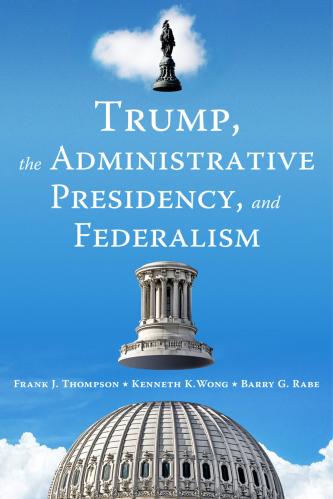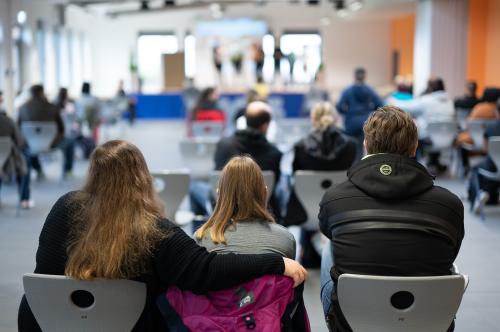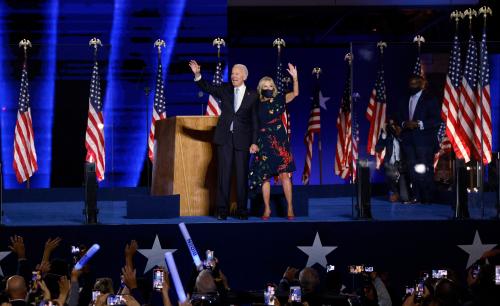Since the first day of his presidency, Joe Biden has identified safe reopening of public schools as a national priority. With about 30% of the nation’s population yet to receive their first dose of vaccines—including, at least for now, children under the age of 12—COVID-19 continues to pose a significant health threat for students, staff, and families.
The American Academy of Pediatrics (AAP) reported that the transmission trend is going in the wrong direction for children. As of early September, the AAP found that children represented almost 27% of all new positive cases in the country. With these recent developments in the pandemic, the Biden administration launched sweeping actions to address parent concerns that children safely return to in-person learning.
On Sept. 9, President Biden used his executive power to implement a series of actions aimed at stemming and ultimately halting virus transmission in schools and workplaces. The American Rescue Plan had already allocated over $120 billion to support states, districts, and tribal communities to safely reopen schools and address the impacts of the pandemic on students. The Occupational Safety and Health Administration (OSHA) will issue regulations mandating vaccines or weekly testing that apply to employers with over 100 employees, which would include educators. The administration now mandates vaccination of approximately 300,000 teachers and staff in federally managed or federally contracted school settings, including the Bureau of Indian Education (BIE) schools, the Department of Defense school system, and the federally funded Head Start program. The mandate is likely to apply to an additional 750,000 parent volunteers in the Head Start program.
Further, the Department of Education announced Project SAFE, a federal grants program that enables school districts to obtain federal dollars to restore school aid that was being withheld by state authorities because of local defiance of state-initiated masking ban. The Department of Education also opened a civil rights investigation to determine if masking bans in several states, including Florida, adversely increase the health risks of students with disabilities as they return to in-person instructional settings.
President Biden is determined to use a wide range of executive power and administrative tools to support schools and districts in fighting the pandemic. These sweeping actions begin to resemble the extensive federal role in aiding urban, rural, and tribal communities and institutions during the Great Society era of the 1960s, when many state governing institutions chose to ignore changing social needs due to outdated legislative apportionment and voting rights suppression. During the eight years of the John Kennedy and Lyndon Johnson presidencies, the number of federal categorical grants grew by 190%. As a comparison, categorical programs increased by 33% during Barack Obama’s two terms. Clearly, Biden’s commitment to systemic equality for all necessitates a federal infrastructure to directly address local needs, especially in states where these needs have been ignored by the state leadership.
Biden’s determination to secure a safe learning environment for over 50 million K-12 students will be favorably received by a clear majority of public school parents. On children’s academic and social needs, parents have first-hand knowledge to inform their views on what the government can do to protect their children during the pandemic. Parents are frustrated with remote instruction and are beginning to cast doubts on the leadership of the education policy system. A recent national survey conducted by USA Today/Ipsos showed substantial parental disapproval of gubernatorial performance in addressing the transition from remote to in-person learning. When given a choice of options for various entities responsible for schooling, governors were rated most negatively, with a 39% disapproval rating among parents of school-age children.
In placing state governors at the top of their dissatisfaction list, parents are urging state leaders to enable and not to hinder in-person learning. While 55% of the surveyed parents see that their children are falling behind with remote instruction, 70% want their children to return to in-person classes five days a week. They are supportive of schoolwide masking (64%) and teacher vaccination policy (56%). At the same time, 81% of the surveyed parents are respectful of families who may choose to delay sending their children back to in-person classrooms. An earlier national poll suggested majority parental support for mask mandates but not mandatory vaccinations for students. Clearly, these figures showing robust support for safe, in-person school reopening should be a wake-up call to governors who oppose masking and vaccination mandates in public schools. Whether governors heed the call, however, remains to be seen.
On masking and vaccination requirements in our public schools, President Biden has taken the side of the majority of public school parents. Biden’s use of executive power to address parental concerns offers a good example of responsive governance. When the president and parents agree on the importance of safe, in-person instruction five days a week, millions of public school students benefit.







Commentary
President Biden’s executive actions align with parent views on safe school reopening
September 24, 2021